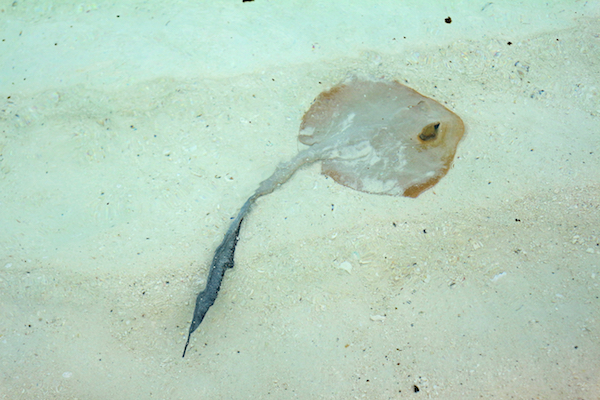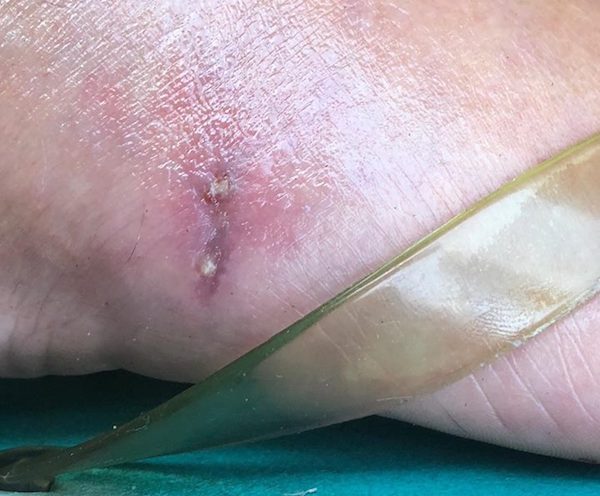

A woman who swims regularly at Les Amarreurs is warning others about the dangers of stingray after she was stung more than a month ago.
She said her injuries haven't yet cleared up and are still "infected and painful" despite some treatment.
The woman swims in the sea at Les Amarreurs most days and spends time on the beach with her grandchildren, particularly during the summer months. She said they have seen stingrays since she was stung, and despite the sea temperature cooling down they appear to still be there now.
Some stingray species are found in warmer oceans, while others are found in the deep oceans. It is not unusual for stingray to be seen off Guernsey with recorded catches locally, although the species are described as being at risk of unregulated fishing in some areas of the world.

Pictured: File image of a stingray.
The woman, who wishes to remain anonymous said she was stung seven weeks ago on her leg and foot and neither wound have entirely cleared up and continue to cause discomfort.

Pictured: One of the stings inflicted by a sting ray at Les Amarreurs.
Guernsey's Committee for Health and Social Care said it follows advice issued by the NHS for stings, which include a number of 'dos and don'ts' including guidance to seek help from a 'minor injuries unit' if you are stung by a stingray.
St John Emergency Ambulance Service said anyone who is stung by a stingray should seek "immediate treatment."
If the casualty has any symptoms of a severe allergic reaction such as loss of consciousness, seizures, breathing difficulties, rapid pulse, tightness of throat, swelling of face, lips or tongue, dizziness, itching or nausea you should call 999 for an ambulance.
If there is severe bleeding or you are in any doubt about the symptoms at all, you should also call for an ambulance.
The St John spokesman also said general first aid advice for Stingray stings is to "rinse the wound in seawater (not fresh water), try to safely remove any fragments of the sting (use tweezers or the edge of a bank card, if they are available). Try to avoid touching the sting with bare hands. However, the advice is not to remove large pieces of the spine from the neck, chest or abdomen."
If there is any bleeding apply pressure.
The spokesman said having followed the steps above, patients should soak the wound in hot water for 30 minutes, taking extreme care not to burn the patient. The water should be as warm as the patient can comfortably tolerate. Once soaked, clean the wound with soap and water, apply a dressing and seek medical advice.
"If there is any doubt, don’t delay, call 999 straight away."
Pictured top: One of the stings inflicted by a sting ray at Les Amarreurs.
Comments
Comments on this story express the views of the commentator only, not Bailiwick Publishing. We are unable to guarantee the accuracy of any of those comments.